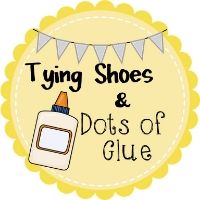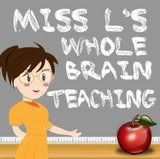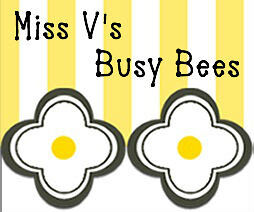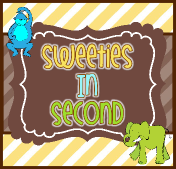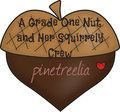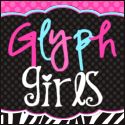This is a repeat of a post from May 20, 2013. I find it very appropriate to share again with the culmination of another school year! Marie Everman is an amazing teacher, just like so many educators around the world, who works tirelessly and selflessly to enrich each child’s life on so many levels! I hope her story is a special reminder of how much each of you were able to accomplish with your special class of students this past year! Happy Summer to you all!!
The end of a school year brings a range of emotions. The demands of seemingly endless administrative paperwork, combined with a rise in student behaviors, can make one wish the last day would come a little faster. On the other side of it, when you reflect back on your students’ growth, you realize how blessed you were to have been a part of it all!
Today, a very special teacher of very special children posted on the WBT forum an amazing reflection on the power of a teacher to make the difference in the long term success of a child. Marie Everman is a teacher of special needs students in West Virginia. This year she began to incorporate the philosophy and strategies of Whole Brain Teaching to help her students reach new heights! Here is her story:
The Genius Ladder
“If a child can’t learn the way we teach, maybe we should teach the way they learn.” Ignacio Estrada
INTRODUCTION
My teaching career as a Special Educator has spanned twenty four years and I have worked with students who have had Special Needs or handicaps including LD, ED, ADHD, ESL, and oral and visual Processing Problems due to trauma, malnutrition, cultural circumstances, and other causes. In my experience, the most difficult subject to teach these children has always been written language. During my career, I have tried numerous written language programs including 4 Square Writing, Traits of Writing, writing prompts, writing journals, sentence strips, photo cards, picture books, story cards, story starters, and others. I have attended many workshops near and far over the years, many specifically designed for children with Learning Disabilities. With the arrival of the digital age, there have been webcasts, podcasts and multiple CD’s and DVD’s that promised to motivate handicapped students and teach them to write cohesive sentences, paragraphs, and essays. Nothing worked! My students were still barely able to compose an interesting simple sentence and were still inconsistent with capitalization and punctuation. I felt frustrated because I had been unable to teach them this vastly important skill. Then, Teacher Heaven opened up! I discovered Whole Brain Teaching and the Genius Ladder.
DESCRIPTION
The Genius Ladder is an engaging written language plan that uses a cartoon format to teach students to write increasingly longer and more interesting sentences. Then, they build on these sentences to compose paragraphs and essays. Because the pictures and sample sentences are fun, silly, and colorful, they grab and keep students’ attention. The “Blah” sentence is the bottom rung of the ladder, and it is composed of only three words, an article, a noun, and a verb. The “Spicy” sentence is next on the ladder, and it expands the “Blah” sentence by adding an adjective to describe the noun. Next up is the “Extender” sentence which adds an adverb. On the top level is the “Genius” sentence which further extends the sentence by using two adjectives and two adverbs. The final operation needed to complete this effort involves having the students write cohesive paragraphs using their Genius sentences as the main idea. Because it contains over 500 slides, the Genius Ladder pdf contains exactly what my students’ need: lots and lots of oral practice.
METHODS
This school year I am a collaborative teacher in a 3rd grade remedial RLA class, so the general educator and I both claim these students. The first week these children were introduced to the “Blah” sentence and learned to orally substitute the noun and/or the verb. We also used gestures to teach the definition of the sentence as well as the required capitalization and punctuation. The class worked as a whole with us, but also spent much time working with a partner. Then they wrote as many sentences as they could in fifteen minutes on the computer. The computer was chosen because writing on paper was such a laborious task for them, and they had rarely been successful with paper and pencil assignments earlier in their school careers. But the computer was neutral and had no prior associations with failures. The next few weeks the same teaching strategies were followed with the “Spicy,” “Extender,” and “Genius,” sentences. The day that all twenty-two of these children composed, capitalized, and punctuated complete “Genius” sentences pandemonium broke out in the computer lab! The children were out of their chairs hugging and laughing and dancing along with their teachers. The joy on their faces and in our hearts was indescribable. Coach B said teachers who use this program need to have big hankies close. (But I only needed two tissues.) That was my most wonderful day in teaching! Funtricity at its highest.
CRITICAL THINKING
Critical thinking develops slowly in handicapped children, is an ongoing process that is measured in baby steps, and requires repetition in varied ways. Now that the students can construct sentences mechanically, they need to use higher level thinking to enable them to build cohesive paragraphs to form essays. (After mastering Genius sentence composition, we had the students begin using paper and pencil to record their thoughts.) Our strategies are to use lots of teacher prompts, to continue to write orally in whole class and partner situations, and to use gestures and onomatopoeia. What seems to work best is using examples taken from fairy tales so the children can relate their own stories to the characters and events from those stories. Of course, we use real life situations too. One of their assignments was to persuade the principal to lengthen their recess time. Their progress with the paragraphs and essays is increasing, albeit slowly. We all had to learn to walk before we could run. But they have come so far during this year, they get lots of ten finger woos from us.
THE BIG HAIRY TEST
In March, the Mother of All Tests, the online writing portion of the WESTEST, appeared. This requires every student in West Virginia to respond on the computer to an unknown prompt with an essay. In past years, most of the SPED students wrote a couple of sentences and quit or just gave up. But this class spent two hours writing rough drafts and typing in their essays. They insisted that we read their drafts before they were shredded because they were so proud. We won’t know how truly well they did until September when the scores are returned. But each of them is a gigantic success story to us.
“When something can be read without effort, great effort has gone into its writing”
Enrique Jardiel Poncela
CONCLUSION
The Genius Ladder rises to the summit as the crème de la crème of all writing programs which enables students with Special Needs to master the skills needed for composing sentences, paragraphs, and essays.
Thanks, Coach B and all of those great folks who work with you to make teaching successful and fun for teachers as well as students.
After I read this, I was so inspired and reminded why every day of the school year is not to be taken lightly! Our students depend on us, even as they are leaving us on that last day of school, to always seek out the best programs and strategies we can to help them realize their full potential! Thank you, Marie for that extra punch of energy we all need at this special time of year!
For more information on the WBT Genius Ladder, go to http://wholebrainteaching.com/











